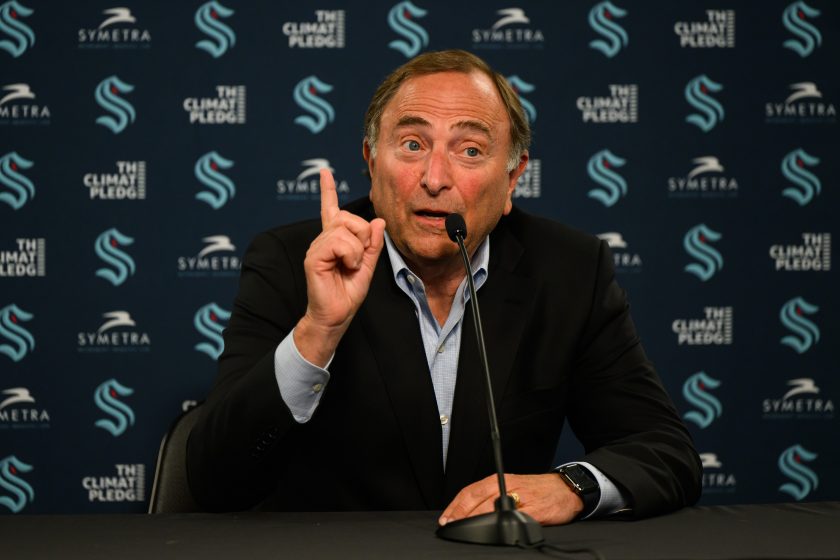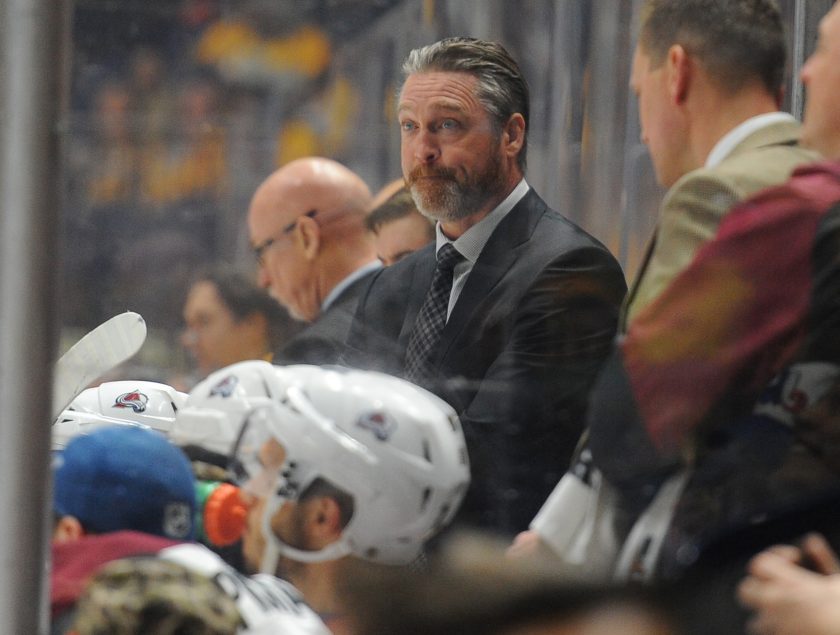New York Rangers would be wise to acquire the perfect veteran

The New York Rangers desperately need to find the perfect veteran to beautifully mesh with the cast of young and growing characters.
[sc name=”Dom Renna Banner”]For a team like the New York Rangers in the midst of a rebuilding phase, it’s easy to just want a lineup full of top prospects on the ice opening night. But ideas like that might just do more harm than good (by way of developing).
It’s honestly an easy habit to fall into, imagining what a lineup come October would look like, should either Jack Hughes or Kaapo Kakko join Vitali Kravtsov, Filip Chytil, Lias Andersson, Brett Howden and the many other baby Blueshirts take the ice. It’s something every Ranger fan has imagined, considering the building hype since the Rangers began this process a year ago.
While it’s something to get excited about, fans have to be careful about wanting too much youth in their lineup.
Looking at the Rangers roster on the final day of the 2018-19 NHL regular season, they hosted just four players on their roster at age of 30 or older, making them one of the youngest teams in the league. The youth is already there and it was evident in some of the ways they closed out games in crunch time.
The best thing the front office of Jeff Gorton and John Davidson can do for this young team is to surround some of these younger players with a legitimate veteran presence come opening night. Now, this isn’t saying these veteran players should be taking all of the ice time away from these young players, because that could halt their development, but employing a veteran leader around full time could do wonders.
We all know how a veteran presence helps a locker room come together. He’s the big boy, the man who’s been through it all, the brand name younger players turn to for guidance when things aren’t going well along. Veterans are usually those who become the glue of a locker room while also policing that very same room. With a team like the Rangers, full of young players in their early 20s, they also serve as proof of how the system works.
If a veteran player is buying into what the coach is preaching, a younger player is more likely to do the same thing instead of just worrying about their game. When vets model unselfish play and excellent leadership, prospects will eventually mimic those actions later in life. Sometimes, we have to remember that sports are so much more than just a game played on a field, court, or, in this case, ice. It’s extremely hard for a rookie or second-year player to come in and create that type of brotherhood, no matter how good the player may be.
Off the ice aside, a veteran presence is crucial for helping the development of these younger players. It’s Marc Staal seeing more ice time than he should in order to help shelter a younger Brady Skjei or Tony DeAngelo. It’s Ryan Strome centering a second line with rookie Filip Chytil while playing his second position to help get him acclimated to NHL life. It’s Henrik Lundqvist working hard with Alexandar Georgiev in practice while taking a step back in game action to help the Rangers learn what they have in a rookie goaltender.
[sc name=”Rangers Center”]Now, of course, when discussing veteran players, on-the-ice play is vital in this hardened salary-cap world. You can’t just have a veteran out there because he’s a veteran, but in reality, he’s hurting your team’s chances to grow on the ice. The veteran needs to first be a positive influence in the locker room and secondly, produce on the ice. The perfect example is someone like a Joe Thornton, who can lead and still perform at a high level even at the tail end of his career. No one is saying the Rangers should go after Thornton, but if they can find a strong veteran presence who can still play at a high level they should be all over that possibility.
If Thornton wasn’t a good enough example, look no further than Toronto with its addition of Patrick Marleau to go along with Auston Matthews, William Nylander and Mitch Marner. Marleau was able to perform well while tutoring the young stars in Matthews and Marner, providing insight only a 21-year veteran can. Want another example? Carolina brought back Justin Williams two seasons ago and he was masterful in bringing their locker room together while falling short in the Eastern Conference Finals.
The free agent market this summer has some guys the Rangers could be interested in that have played similar roles on other teams that they would play if they come to Broadway. Former Blueshirt Brian Boyle was tremendous in helping a young New Jersey Devils team make the playoffs in 2017-18. Other names like Thomas Vanek, Ben Lovejoy, Williams and Jason Pominville all serve as other examples of veteran guys serving as a big brother for younger teams.
Obviously, there is no rule in sports that forces a team to employ a certain number of older players on the roster. But the teams that do employ a good mix of veteran talent with younger players seem to go through these rebuilding or retooling phases a little faster. It’s not the sexiest of ideas, but it’s something the Rangers should consider to help further the development of these prized prospects moving forward.
[sc name=”Twitter Follow Link” text=”Dom” username=”drennaESNY” ] [sc name=”Rangers Link Next” link=”https://elitesportsny.com/2019/06/09/how-expendable-are-new-york-rangers-youngest-defensemen/” text=”How Expendable Are The Rangers Young Defensemen? ” ]Dominick is a graduate of Canisius College. He has covered the Rangers for the last seven seasons and the Yankees for the last four.






